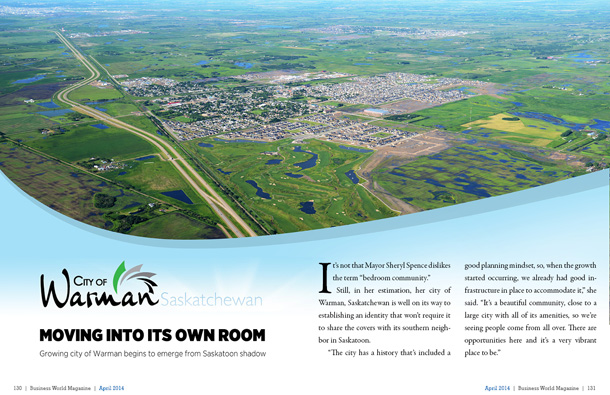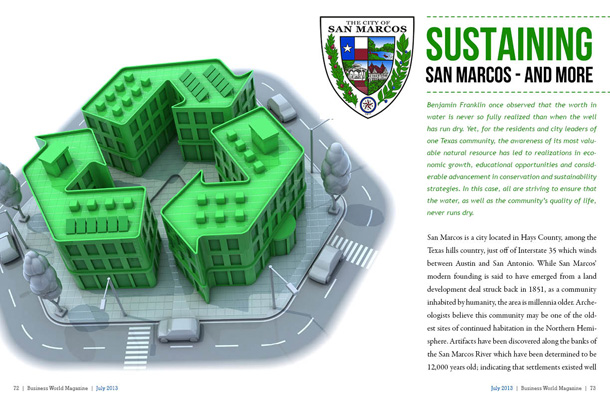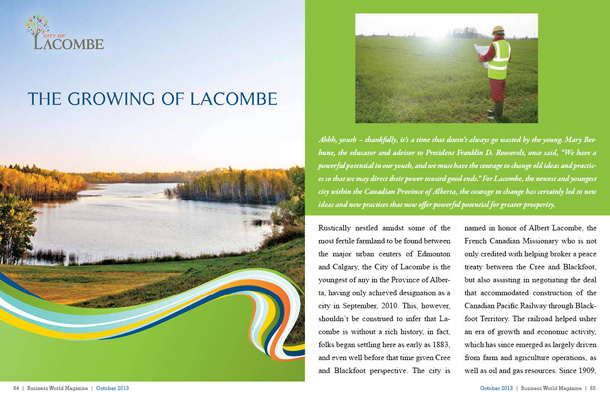
Investing in the future
 The City of Melbourne’s 1200 Buildings Program
The City of Melbourne’s 1200 Buildings Program
All big projects have to start somewhere. Less than 15 years ago, the City of Melbourne’s environmental focus was modest – mostly tree planting and recycling – but a concerted effort, based on a community desire for Melbourne to become an eco city, has seen the city emerge as an environmental leader both in Australia and internationally.
The City of Melbourne was one of the pioneers of local government in addressing the mitigation of greenhouse gas emissions. A pragmatic 2003 policy – Zero Net Emissions by 2020 – aimed to turn a serious threat to Melbourne’s economy and way of life into an opportunity for economic growth, environmental improvements and social cohesion – a triple bottom line business equation. Targets were set using market mechanisms and regulations aligned with national and state programs and policies, which aligned with a growing interest from business and community in a green agenda and identity for Melbourne.
Councillor Cathy Oke is the Chair of Melbourne’s Eco City Committee and a champion of the city’s green initiatives.
“The City of Melbourne has been committed for at least the last 10 or 12 years to being an environmentally sustainable Council. Through the last decade, awareness around climate change and the need to reduce our carbon footprint has been at the forefront of Council’s agenda,” she says.
“To achieve the vision set out in Zero Net Emissions by 2020, we are building on our strong reputation and ability to facilitate initiatives, activate partnerships with key stakeholders, advocate, educate and lead by example through the actions we take.”
The environmental and economic benefits of retrofitting
The City of Melbourne was the first Australia council in 2006 to use its planning powers to require new commercial buildings to meet minimum energy standards.
“New commercial buildings use less energy per square metre than previously built buildings,” Councillor Oke says, “but new buildings alone will not bring about the scale of change that we need to see.”
The Council estimates that in 2020 approximately 90 per cent of the city’s commercial buildings will have been built before 2006. To meet Zero Net Emissions’ targets, existing commercial buildings would also need to significantly reduce their greenhouse gas emissions.
Facilitating the Council’s commitment to becoming a zero net emissions city by 2020, the 1200 Buildings program is the City of Melbourne’s premier sustainability initiative. The scale and ambition of the program is a world first and was designed to catalyse the environmental retrofit of 1200 commercial buildings in the municipality.
Commercial buildings in the City of Melbourne account for 53 per cent of municipal-wide greenhouse gas emissions. With that level of impact, environmental retrofitting of buildings is widely recognised as one of the most cost-effective methods of reducing energy consumption and cutting greenhouse gas emissions. Independent research conducted for Council identified a significant opportunity in retrofitting two thirds of the city’s stock – an equivalent of 1200 buildings.
Additional analysis by consulting firm Deloitte suggested that while the program would help the city meet its environmental goals and reduce energy costs by around 25 per cent, very importantly the transformation of the Melbourne’s buildings could also bring significant economic benefits – driving up to $2 billion in investment into the city and creating around 8000 green jobs .
“The 1200 Buildings program is one of the greatest economic and environmental opportunities we have and will place Melbourne at the cutting edge of the green building movement. It will transform existing commercial buildings into centres of environmental innovation, showcases of engineering excellence and engines of economic growth,” Cr Oke says.
Building momentum
Councillor Oke says that the program has been a massive undertaking, with significant support coming from the state and federal governments to help overcome some of the financial barriers to retrofitting.
“The challenges for retrofitting commercial buildings are well known. Access to affordable capital remains the most significant barrier – investment in sustainability projects are not always attractive to financial institutions,” she says.
There is also the split incentive – the fact that retrofitting has a significant upfront cost – often covered by buildings owners, but the benefits in reduced bills are claimed by tenants.
“Unlike Sydney, almost all of the buildings in our CBD are multiple tenanted. Single occupier buildings are much easier to retrofit or obtain finance for because only one agreement is made with one organisation.
In multiple tenanted buildings it is not the land owners who benefit from an energy efficiency upgrade, it’s those who are paying the water and electricity bills – the tenants.”
To meet these challenges, the City of Melbourne engaged the help of the Victorian State Government to undertake a world first – an amendment to legislation to remove this split incentive and encourage uptake of the 1200 Buildings program.
In 2010 the Victorian Parliament passed Australia’s first legislation to support the large scale environmental retrofit of city buildings. The amendment to the City of Melbourne Act enables Council to help building owners obtain finance for retrofit works.
Funds advanced by financial institutions for environmental retrofitting works will be recovered by Council through a charge linked to rates collection called an ‘Environmental Upgrade Charge’.
Under this charge, financial institutions will provide money to a building owner on condition that the owner undertakes the agreed upgrade works. In exchange, the owner or occupier must pay the environmental upgrade charge to the Council. The money received by Council will be used to repay the lending body.
Cr Oke says the amendment was an important step in facilitating the program.
“The amendment allowed Council to establish a financial mechanism that will make lending for environmental retrofit activities more attractive to financial institutions and overcome many of the financial barriers faced by building owners,” she says. “It will help drive innovation in sustainability and securely place Melbourne and Victoria as Australia’s environmental leaders.”
The Sustainable Melbourne Fund – a wholly owned Trust established by Council in 2002 – is operating the financial mechanism on behalf of Council.
Taking a lead
Leading by example, the City of Melbourne has begun to put its own buildings through the upgrade process. “We are committed to retrofitting and have ourselves signed an Energy Performance Contract with Honeywell to upgrade 12 of our own properties, including our historic Town Hall building,” Cr Oke says.
“We have invested almost $3 million in our own retrofitting program, with an agreement that it will be paid back in energy reduction and cost savings to the City of Melbourne within ten years.”
A 10 year term means the results of this investment takes a longer term view, particularly for a Council that could see two elections by that point.
“Of course there is a payback period, but what you have to consider is that once you have paid back that initial upfront cost, in theory you could be making money,” Cr Oke says. “We are making a commitment to the city. We are doing this to make sure that our city is ready for the impacts of climate change. We carry upfront costs now and will see the benefits in 50 years’ time.”
Another benefit of the 1200 Buildings Program is that this opens up opportunities for green businesses and developers.
“It is really exciting seeing people so enthusiastic about selling their environmental products. The opportunity to create green jobs and environmental economic activity in the city is quite enormous,” Cr Oke says.
A long term focus
1200 Buildings is a major project but it is not the only long term environmental initiative undertaken by the City of Melbourne. The City is assisting office tenants improve energy efficiency through City Switch, a national green office program. Tenant engagement is important to ensure buildings perform to their optimum over time. Council is also embarking on significant tree replacement projects and is looking to increase the tree canopy of the city by at least 50 per cent, which should in turn lower the overall temperature by one or two degrees.
“This will not only make living in the city more comfortable but reduce heat and sun related health issues,” Cr Oke says.
Stormwater harvesting projects – capturing rainwater and reusing it – is also among the suite of cutting edge initiatives that will address long term environmental impacts and save money for the city. Projects in the inner -city suburb of Carlton will also see the Council work with residents on a suite of locally based environmental initiatives, from reducing recycling in high rise buildings, trialling smart energy initiatives, to establishing community gardens.
“The thing is that you can be a green city, and that is fantastic, but what we are demonstrating is that being green has economic and social impacts. This is about real action for future benefit – not greenwashing – and that is something that everyone, in all sectors should take note of.
Melbourne is regularly recognised as one of the world’s most liveable cities and to maintain that status we are investing in all aspects of our future.”
For further information about 1200s Building visit: http://www.melbourne.vic.gov.au/1200buildings or for information about City Switch visit: http://www.cityswitch.net.au







